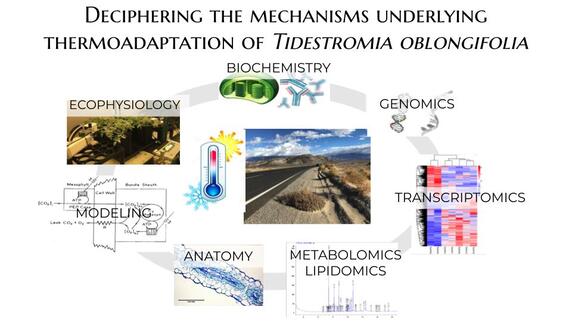Sustainability

Global warming is changing the habitability of many places for many species on Earth. Plants occupy the largest portion of the land surface and understanding thermo-adaptation in plants is critical and timely for global sustainability, food security and species conservation. This is a new focus for collaboration between molecular biologists and ecologists. In the 1970s, Carnegie scientists studying Tidestromia oblongifolia in Death Valley discovered that it is highly adapted to high temperatures and has optimal photosynthetic rate at 47ºC that is comparable to crop plants in their most favorable conditions. The molecular basis of this remarkable thermo-adaptation of photosynthesis remains largely uninvestigated. To decipher the mechanisms of thermo-adaptation of T. oblongifolia, we have assembled an interdisciplinary team with expertise in ecophysiology, genomics, biochemistry and computational modeling of photosynthesis. We have successfully recreated Death Valley conditions in our customized growth chambers and are conducting physiological measurements of two T. oblongifolia ecotypes (Death Valley (max temp ~50ºC) and Dos Palmas (max temp ~42ºC) along with three ecotypes of a related Amaranth species called Amaranthus hypochondriacus, which is an ancient crop from the Incas that has a high potential for future agriculture.






